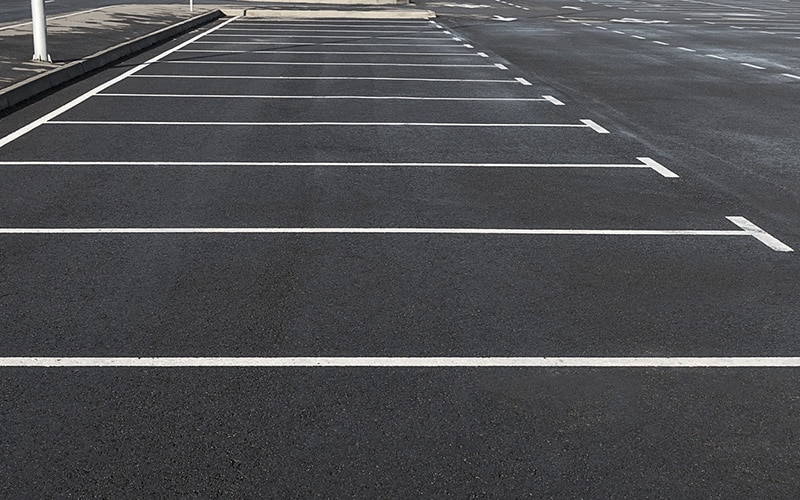Change Your Property's Visual appeals: Commercial Parking Area Paving and Asphalt Sealing Solutions
Change Your Property's Visual appeals: Commercial Parking Area Paving and Asphalt Sealing Solutions
Blog Article
Warm Mix Asphalt: A Lasting Remedy for Pavement
Hot Mix Asphalt (HMA) has actually become a leading sustainable option for pavement remedies, supplying a myriad of cutting-edge innovations and ecological benefits. Its ability to reuse products and minimize power usage presents an engaging case for its fostering in roadway building tasks. The long-term efficiency and longevity of HMA make it a recommended choice for facilities development. As the need for eco-friendly construction techniques grows, discovering the subtleties of HMA's sustainability can supply important insights right into the future of pavement services.
Ecological Advantages of Hot Mix Asphalt
.png)
Furthermore, Hot Mix Asphalt assists to mitigate city heat island results. Its dark shade takes in sunlight, reducing the quantity of warmth showed back right into the atmosphere contrasted to lighter-colored pavements. This can decrease ambient temperatures in metropolitan areas, reducing the demand for air conditioning and ultimately lowering energy intake.
Furthermore, Hot Mix Asphalt adds to boosted stormwater administration. Its porous nature enables water to recharge and penetrate the pavement groundwater supplies, reducing overflow and the risk of flooding. These ecological benefits make Warm Mix Asphalt a sustainable option for leading freeways and roads.
Energy Efficiency in HMA Manufacturing
Is energy effectiveness a vital variable in the manufacturing of Hot Mix Asphalt (HMA)? Definitely. Power plays a significant function in the production of HMA, affecting both expense and environmental sustainability. One essential facet of energy effectiveness in HMA manufacturing is the use of warm mix asphalt (WMA) technologies (regrading). WMA permits for the mixing and positioning of asphalt at lower temperature levels compared to typical warm mix asphalt, leading to decreased power intake throughout production. This process not just reduces gas usage however additionally lowers greenhouse gas exhausts, making it a much more ecologically friendly choice.
Moreover, improvements in plant technologies have led to more energy-efficient HMA manufacturing procedures. By optimizing power usage in HMA production, the industry can decrease its carbon footprint while preserving top quality sidewalk products.
Recyclability of Warm Mix Asphalt
The recyclability of Hot Mix Asphalt (HMA) is a pivotal element of its sustainability and long-term environmental impact. HMA is one of the most recycled materials in the United States, with over 100 million lots of reclaimed asphalt sidewalk (RAP) being recycled each year in brand-new pavement building. Recycling HMA uses a number of environmental advantages, such as reducing the need for here virgin products, lowering energy usage throughout production, and reducing the amount of waste sent out to landfills.
The process of recycling HMA entails grating the existing sidewalk, squashing it into smaller pieces, and blending it with new aggregate and asphalt binder to create a recycled mix. This recycled mix can typically execute along with or perhaps far better than standard HMA, while calling for fewer basic materials and creating lower greenhouse gas emissions. By including RAP right into brand-new sidewalk tasks, roadway companies can preserve all-natural resources, lower expenses, and decrease the environmental impact of roadway building and maintenance activities. Overall, the recyclability of HMA plays a significant function in promoting lasting techniques within the sidewalk sector.

Long-Term Efficiency of HMA
Asphalt pavements show durability and resilience over an extensive duration, mirroring the long-term performance of Warm Mix Asphalt (HMA) In addition, innovations in HMA innovation, such as the use of polymer-modified binders and warm mix asphalt, have actually better boosted the durability and durability of HMA pavements. By prioritizing high quality construction and upkeep methods, HMA continues to verify itself as a affordable and sustainable remedy for long-lasting pavement framework.

HMA: Resilience and Sustainability
Demonstrating both toughness and sustainability, Warm Mix Asphalt (HMA) has ended up being a cornerstone in the building and construction of long-lasting pavement frameworks - angled parking. HMA's resilience originates from its ability to endure heavy loads, severe climate problems, and high traffic quantities, making it a reputable selection for streets, freeways, and airport paths. The make-up of HMA, which commonly consists of accumulations, binder, and filler, plays an important duty in enhancing check this site out its longevity and resistance to damage
In addition, HMA's sustainability depends on its recyclability and energy-efficient manufacturing process. The capacity to reuse recovered asphalt sidewalk (RAP) in brand-new HMA mixes minimizes the need for virgin products and reduces the ecological effect of sidewalk construction and upkeep. In addition, the energy performance of producing HMA depends on its lower mixing temperatures compared to other sidewalk products, leading to decreased energy intake and greenhouse gas exhausts.
Final Thought
In final thought, warm mix asphalt (HMA) supplies a lasting solution for sidewalk with its ecologically pleasant qualities. HMA's recyclability, energy efficiency in production, and long-term the original source durability make it a green option for road building.
HMA is one of the most recycled materials in the United States, with over 100 million bunches of redeemed asphalt pavement (RAP) being reused each year in brand-new sidewalk building.The procedure of reusing HMA involves crushing the existing sidewalk, squashing it into smaller sized items, and blending it with brand-new aggregate and asphalt binder to develop a recycled mix.Asphalt sidewalks show durability and strength over an extended period, reflecting the long-term efficiency of Warm Mix Asphalt (HMA) Furthermore, developments in HMA innovation, such as the use of polymer-modified binders and warm mix asphalt, have further boosted the durability and longevity of HMA pavements. The capability to reuse redeemed asphalt pavement (RAP) in brand-new HMA combinations reduces the need for virgin products and reduces the environmental effect of sidewalk building and construction and upkeep.
Report this page